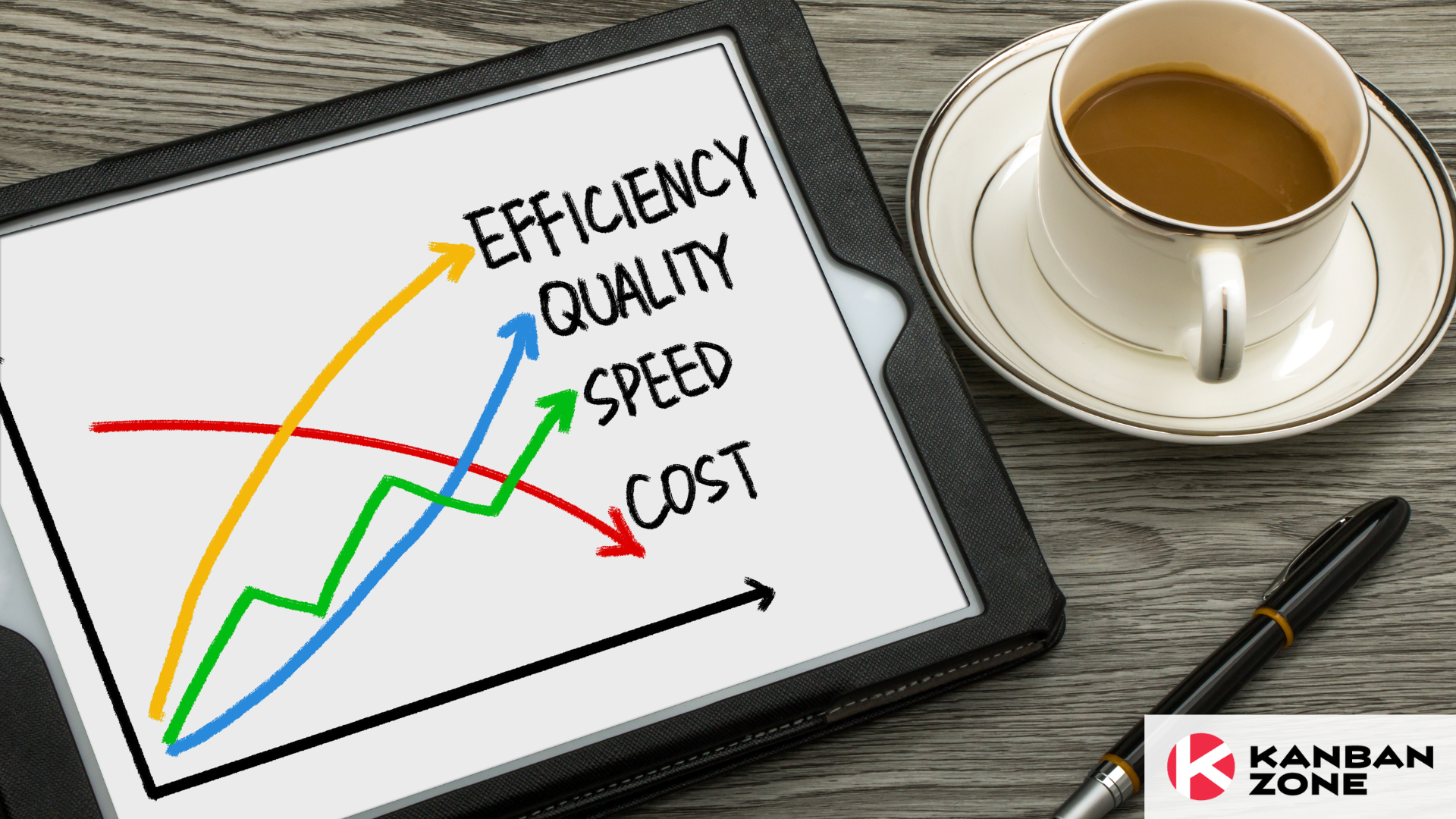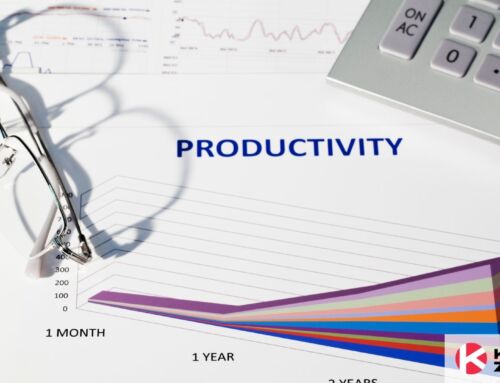
Maintaining a high level of process efficiency can be challenging, especially in large enterprises. Large enterprises work on several projects that need constant tending and may face bottlenecks that are bad for process efficiency. Poorly designed and organized processes in the organization may hinder your business success, which is why it’s essential to learn how to measure and increase process efficiency.
Efficiency is the cornerstone of success in any organization. Whether you’re a manufacturing giant aiming to produce more with less, a customer service center striving to resolve inquiries swiftly, or a tech startup looking to optimize your software development cycle, this article equips you with the knowledge and tools needed to assess and enhance your processes.
If you thoroughly document processes and activities in your organization but don’t see desirable results, it’s time to identify the bottlenecks and take the necessary measures to improve process efficiency and effectiveness.
What is Process Efficiency?
Process efficiency is a metric used to determine how smoothly and efficiently some process is executed in the organization. It’s worth mentioning that it has a direct or passive impact on profitability. Another important metric is the Total Process Efficiency (TPE.) TPE is a metric that determines how well a process can deliver a product or a service without causing bottlenecks or generating waste in the process.
TPE is always measured for every unit that gets produced by the process. Many organizations use TPE as the crucial performance indicator (KPI) which is important as it demonstrates continuous efforts for process improvement among the development teams.
Still, teams need to continuously research new ways that will improve process performance and get rid of as much generated waste as possible to increase process efficiency.
What is a Process Metric?
A process metric is a measurement that can help track the performance of processes in a business. These metrics share a lot of similarities with KPIs because they also measure the performance of a specific task and whether it’s aligned with the goals teams set for the Sprint or some other desired period.
Process metrics allow teams to easily access the information about how well a process performs and forward it to managers to assess its quality. Process metrics are part of cycles of iterations where team members measure the process performance and then use delivered metrics to improve the next cycles.
Process metrics are used across different fields and sectors, including IT and software development, manufacturing, human resources, supply and demand, and others. Business analysts often list them as percentages to a certain metric that shows the performance of that process.
Process metrics fall under three major categories.
- Static process metrics: This metric describes the properties of a defined process.
- Dynamic process metric: Measures the performance of a process.
- Process evolution metrics: Describes how the team makes changes within a process throughout the time.
What is Operational Efficiency Metric?
The Operational Efficiency Metrics section is pivotal in any process optimization effort. By selecting the right metrics, organizations can gain invaluable insights into their processes, identify areas for improvement, and ultimately increase overall efficiency.
Operational efficiency metrics are important because they help measure business performance in the sense of how much each department contributed to generating revenue and how much expense and loss they generated.
Many operational efficiency metrics can help you evaluate the performance of your business. Some of them include:
- Cycle Time
- Utilization Rate
- Productivity
- Quality Metrics
- Inventory Turnover
- Cost Reduction
- Customer Satisfaction
- Resource Optimization
- Energy Efficiency
- Down Time
How to Measure Process Efficiency and Effectiveness
Measuring process efficiency and effectiveness is essential for organizations seeking to optimize their operations, enhance productivity, and achieve their strategic goals. Here are key steps and considerations for measuring these critical aspects of business effectiveness and how to measure process performance:
- Define clear objectives: Define specific objectives and goals that will follow your processes.
- Identify key process efficiency metrics: Every organization is trying to meet its unique goals, and as such, it will measure process efficiency through different metrics. Choose efficiency metrics that are appropriate for your business.
- Data collection and analysis: You need to establish a robust data collection method to be able to analyze data collected throughout completing processes. By analyzing data, you can track the performance over time.
- Benchmarking: Once you analyze the data, you’ll be able to conduct benchmarking, by comparing process efficiency and effectiveness. If possible, you can also compare your performance metrics to industry standards or even your competitors’ performance.
- Continuous Improvement: Encourage employees to provide input and actively participate in process optimization efforts. Regularly review metrics, assess performance against objectives, and implement corrective actions when necessary.
Find out how you can track your performance better with the Kanban Metrics.

Process Improvement Examples – How to Improve Process Efficiency?
In order to improve process KPIs, efficiency, and effectiveness, you should implement certain changes in your workflow and organization of your processes. Below, we highlighted how to do it.
Understand Your Current Processes
Now and then, a company may have to go through a process it didn’t go through before. Even if the process is implemented perfectly for the first time, it’s still important to follow up through the steps and make them clear and concise to be able to re-implement the process in the future.
There are multiple reasons why a process didn’t execute well. It may be because the steps involved in completing it weren’t clear, or the team didn’t understand the execution. Whatever may be the case, it’s important to collect and analyze data to identify the bottlenecks and make your processes easier to understand.
Set Business Goals and KPIs
Identifying process KPIs and setting realistic business goals can help you improve process efficiency and effectiveness. If you’re running an e-commerce business, offering a product or service, then improving factors like customer service satisfaction (CSAT) could also lead to improvement of your KPIs.
Introduce LEAN Principles to Your Organization
Optimizing process efficiency can help cut costs and improve process efficiency by introducing leaner principles in manufacturing, supply chain management, and product development.
Some organizations introduce LEAN Technology to their workflow. This process, which originates from Toyota, shows how to improve effectiveness and efficiency while minimizing costs and loss. Implementing the LEAN management can be achieved by using Kanban Zone’s versatile Kanban boards. Implementing LEAN principles can help eliminate waste, reduce lean times, and optimize utilization.
Regular Training & Cross-Training
If you want to easily achieve process improvement, you will need to ensure that your employees know what they’re doing and that their education and training are up-to-date. Ensuring adequate and frequent training (like monthly training) can make them feel more included in ongoing process improvement.
Cross-training is another thing you can implement because you’ll enable your employees to work on multiple tasks, and flexibly switch in case another employee is on sick leave or they took a vacation. Continuous training leads to continuous process improvement, regardless of the type of organization.
Time Audits
Time audits help determine how much time a team or an individual takes to complete a specific task. Still, setting benchmarks you’ll measure during those time audits can additionally help improve process efficiency.
It’d be best to hire a team of professionals like researchers who can perform time audits, collect the data, and then analyze it or conduct a survey that can give more insight into process performance.
Conclusion
Measuring process performance and efficiency is important because it gives insights into what a team or an organization can do to improve the output of features, products, and services. Managing processes and performance is simple with innovative management software such as Kanban Zone. Register here to try it!
Learn to Work Smarter, Not Harder!
Get our top articles weekly.
Table Of Contents
Discover many more posts…







